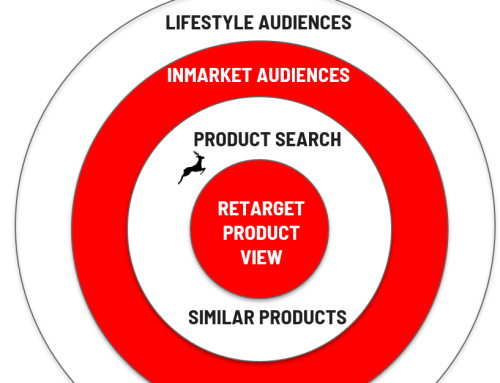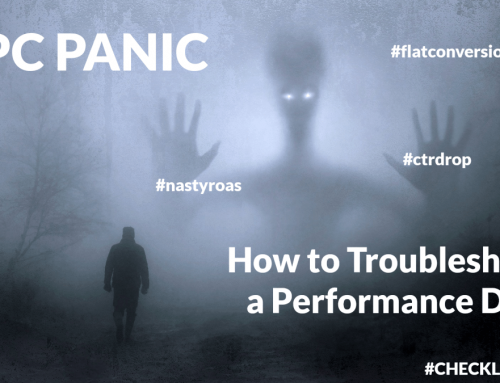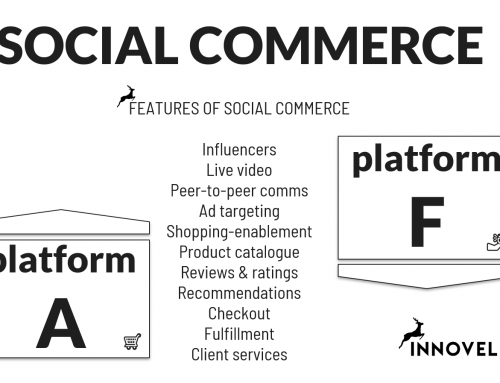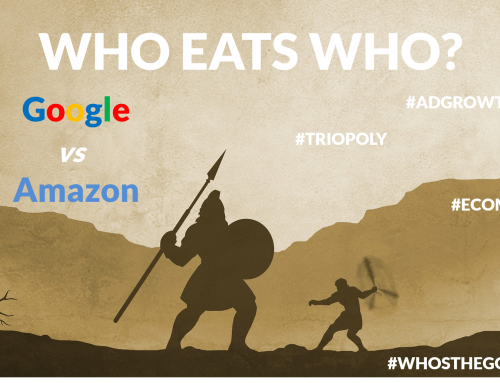There is a missing link in Digital Marketing. I am talking about a discontinuation of meaning from one area of marketing excellence called Brand Advertising into another area of marketing excellence called Performance Marketing. The link has been missing forever. It was the same one described in the famous phrase “I know half my advertising budget is wasted but I don’t know which half”. Well, this is 2015 and we know a lot more about what works and what doesn’t. However, in most cases, it is impossible to establish the direct link between the Brand exposure and the final conversion on a website.
When you invest heavily in brand exposure it has an impact on the performance of your conversions. You KNOW it works but you can’t always SHOW it works.
From TV to Digital
In order to illustrate the missing link from TV to digital, I had the chance to monitor a website during TV exposure. The founder of a small company got exposure on National TV in France. No paid media was active at that point in time and as the brand has only existed for 3 years, it does not show up in Google Trends – it is an emerging brand. Needless to say, exposure on National TV generates an immediate traffic peak the very moment the company is mentioned on TV. Boom. Three and half minutes of brand happiness.
The TV exposure could not in any way be seen in the tracking data. No clicks from the live streaming or the TV channel’s website. So obviously there is a missing link between TV exposure and the traffic on the website. Fair enough, there is a missing link between an offline and the online effect, you would say. On the monitoring side, we can see the peak in Analytics as illustrated above, but we can’t show where the traffic came from. When we dig deeper and analyze the origin of the traffic, the referrals show that 86% of the traffic on the 21st of April comes from organic search. We could draw a fully documented wrong conclusion saying we did a great job in SEO.
From Facebook to Website via Replay
After the TV exposure, we tried to prolong the positive effect of the exposure by posting a link to the video replay URL and boosting its audience on Facebook – it seems to have had an effect the following 4 days where traffic was still significantly higher than normal. This was an entirely digital exposure. There was no physical link from the TV Replay page to the website.
The afterburner effect was most likely generated by this boosted post on Facebook promoting the replay of the TV sequence exposing the post to 12000 people. We KNOW it but we can’t SHOW it. Looking into Analytics we find 4 visits from Social Media and 77% from organic search compared to an average of 66% organic search traffic the month before. Traffic was more than double its normal level. There is thus a missing link between Social Media exposure and website traffic.
From Display to Website
Similar effects happen in Display Advertising although there is a way to start measuring the impact of Display advertising, namely using a post-view and a post-click approach. In short, this would mean a tracking cookie would be placed on the computer viewing a banner ad. If a subsequent conversion happens within a certain time-period, the Display View could possibly have caused or contributed to the conversion. If we there is no tracking of postview or the cooking is not kept or if the user shifts device (shuffling computer, smartphone, tablets), the link goes missing again.
Taking Down Goliath
I had a discussion a while back with a highly respected online marketer, Kevin M Ryan about his new book on Digital marketing. « Taking Down Goliath » is a hands-on, no BS Digital Marketing Manual written from the perspective of small business which I can strongly recommend.
The underlying thesis is sound and compelling: the Internet has levelled the playing field. You don’t have to be a Goliath to succeed in Online Marketing.
In one of the early chapters, I dwelled on a phrase I had to give some thought. The authors say something in the line of:
“There are 2 types of campaigns, Direct Response and Branding. You have to set your objectives in order to succeed what you venture to do. For Direct Response, your objective will be conversions and for Branding it will be exposure”.
I am not usually that categorical about the division as I have always wanted to believe that you can achieve what everyone wants: Branding with Performance. I know from my own agency that we try to carry everything into a performance objective in our yearly plans – but then I also know that we can rarely show the direct relation between branding effects and the performance. We factor them into conversion rates and direct traffic. In the end it comes to this: In a long term view you can see the relation between Branding and Performance but in the short run and at the campaign level, there is a missing link.
Meantime in real life
In the process of documenting a presentation for SMX London, I dug into some client data at the campaign level. I factorized the data so as to show no real figures and only relative proportions and I arranged the communication “channels” on a range from Brand to Performance based on a wonderful tool Google provide on the customer journey to online purchase in that particular sector: 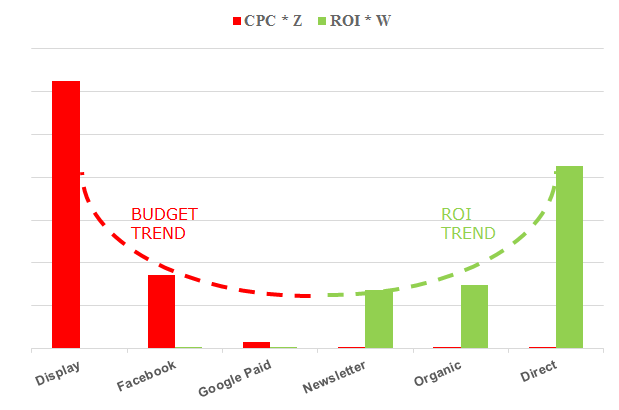 The red bars show a comparative cost per click and the green bars show an indication of the ROI as measured on the last click (well, ROAS, Return on Ad Spend, really but let’s call it ROI for simplicity). The data includes no postview tracking and no attribution modelling. What we see is massive cost and inexistent ROI of “Display Advertising” and “Facebook Ads” and massive ROI of “Direct traffic” and “Organic traffic” at no media cost. Due to the missing link, what the graph show us is this: If you want Branding, don’t look at channel-wise ROI, if you want short term ROI don’t do Branding.
The red bars show a comparative cost per click and the green bars show an indication of the ROI as measured on the last click (well, ROAS, Return on Ad Spend, really but let’s call it ROI for simplicity). The data includes no postview tracking and no attribution modelling. What we see is massive cost and inexistent ROI of “Display Advertising” and “Facebook Ads” and massive ROI of “Direct traffic” and “Organic traffic” at no media cost. Due to the missing link, what the graph show us is this: If you want Branding, don’t look at channel-wise ROI, if you want short term ROI don’t do Branding.
Remarketing is part of the answer
There has been a lot of talk about remarketing for the past years and the beauty of remarketing in its traditional form is to marry a classical Branding channel, namely Display advertising, with a performance metric. Remarketing allows you to do the trick of doing a targeted Performance campaign to someone who had previously been exposed to your brand. Remarketing often tries to do more than that but also has its limits. Remarketing is not the missing link – it is merely a patch.
DMPs are probably much better
More recently, the digital marketing community talks about Data Management Platforms (DMPs). A DMP plugs into all an advertisers’ audiences and ideally into the advertisers’ CRM also. It concentrates all the different knowledge of the customers into a common view and can be used to design multi-channel campaigns and further add understanding. It can be used to pursue the same goal of identifying an audience which has been sufficiently exposed to a brand in order to run performance campaigns and drive revenue. The promise of an end-to-end solution to compensate for the missing link is there. Will we still be able to take down a “Goliath with a DMP”, I wonder?
And Facebook Ads have it all
Until recently, remarketing and DMPs would be counting on a great Display inventory for their campaigns. It was called the FBX, or Facebook Exchange, and it allowed external advertisers to place ads within the Facebook ecosystem. But recently, it looks like Facebook are looking to turn the tables. Looking closer into the Facebook advertising universe, it has dawned on me that Facebook actually already provide an end-to-end solution of Brand to Performance. Within the Facebook universe, you can run a Branding exercise and subsequently use the exact audience who saw your ads as a “Custom Audience” for which you subsequently run a Performance or Direct Reponse campaign. You will still be looking at 2 different campaigns with different metrics but if you want to establish the link between them that is an easy exercise.
With digital communication continuing to fragment across an ever increasing number of channels and sites it will not be an easy task to keep up with the interrelations in the data. Even with Big Data and DMPs. We are likely to have to continue living with the missing link in its various forms for a while still.
(Comments and feedback welcome on the LinkedIn version of this article which you can find here)




